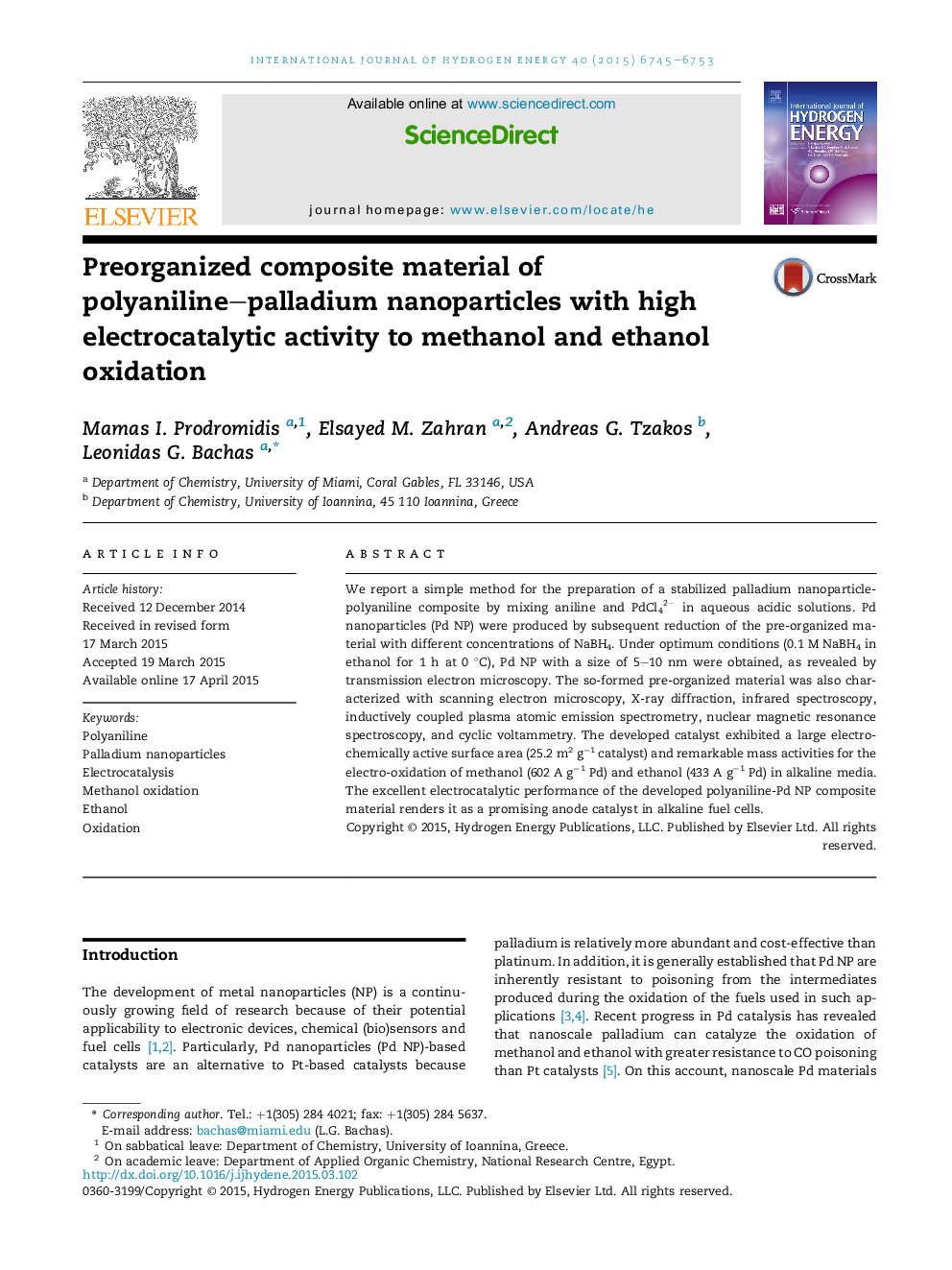| کد مقاله | کد نشریه | سال انتشار | مقاله انگلیسی | نسخه تمام متن |
|---|---|---|---|---|
| 1271185 | 1497452 | 2015 | 9 صفحه PDF | دانلود رایگان |

• Simple electroless approach for the synthesis of Pd NP incorporated in polyaniline.
• The preorganization of the material allows for spatial distribution of Pd NP.
• The nanocomposite demonstrated high electrocatalytic activity for alcohol oxidation.
We report a simple method for the preparation of a stabilized palladium nanoparticle-polyaniline composite by mixing aniline and PdCl42−PdCl42− in aqueous acidic solutions. Pd nanoparticles (Pd NP) were produced by subsequent reduction of the pre-organized material with different concentrations of NaBH4. Under optimum conditions (0.1 M NaBH4 in ethanol for 1 h at 0 °C), Pd NP with a size of 5–10 nm were obtained, as revealed by transmission electron microscopy. The so-formed pre-organized material was also characterized with scanning electron microscopy, X-ray diffraction, infrared spectroscopy, inductively coupled plasma atomic emission spectrometry, nuclear magnetic resonance spectroscopy, and cyclic voltammetry. The developed catalyst exhibited a large electrochemically active surface area (25.2 m2 g−1 catalyst) and remarkable mass activities for the electro-oxidation of methanol (602 A g−1 Pd) and ethanol (433 A g−1 Pd) in alkaline media. The excellent electrocatalytic performance of the developed polyaniline-Pd NP composite material renders it as a promising anode catalyst in alkaline fuel cells.
Figure optionsDownload as PowerPoint slide
Journal: International Journal of Hydrogen Energy - Volume 40, Issue 21, 8 June 2015, Pages 6745–6753